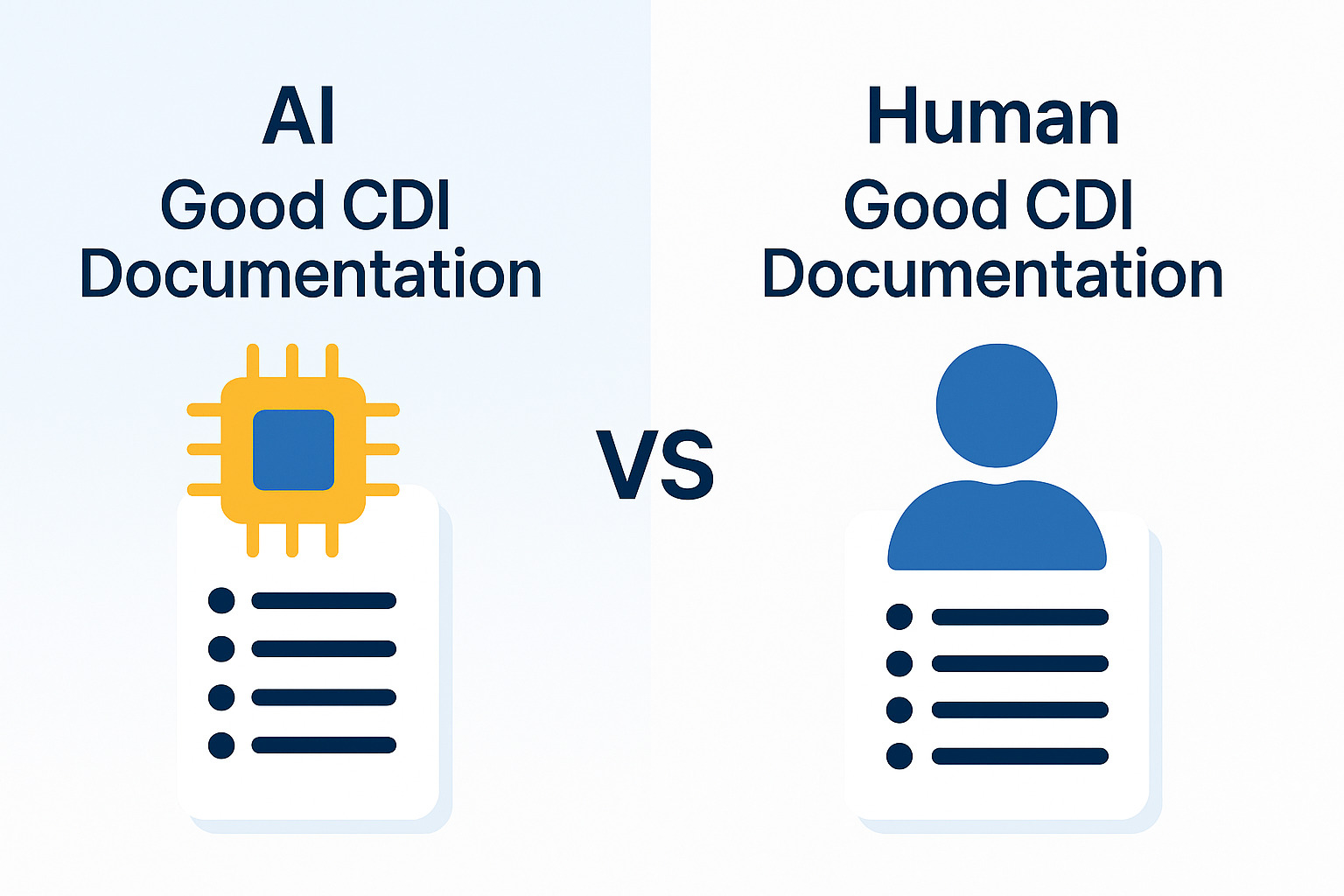Updated on: September 17, 2025
Introduction: Why Good Clinical Documentation Integrity Matters
Clinical Documentation Integrity (CDI) is no longer just a back-office function—it’s central to patient care, compliance, and financial performance. Good CDI ensures that medical records are accurate, complete, and properly coded, directly impacting reimbursement, audit readiness, and patient safety.
But here’s the challenge: writing good CDI manually takes time and often leads to inconsistencies, missed ICD-10 codes, and denied claims. That’s where AI assistance—like the DocScrib AI Scribe—can transform documentation.
What is Good Clinical Documentation Integrity (CDI)?
At its core, good CDI is:
-
Accurate → Correctly captures diagnoses, treatments, and patient condition.
-
Complete → Includes all required details for coding and billing.
-
Compliant → Aligns with ICD-10 standards, HIPAA, and payer requirements.
-
Clear → Easily understood by clinicians, auditors, and consultants.
Without these qualities, documentation becomes a source of errors, denials, and compliance risks.
👉 Related resource: CDI and ICD-10 Coding Support
Common Problems with Poor CDI
-
Vague Language → “Patient not feeling well” instead of specifying “Patient reports fatigue and shortness of breath for 3 days.”
-
Missed Details → Skipping comorbidities or secondary diagnoses.
-
Incomplete Notes → Lack of treatment rationale or follow-up plans.
-
Coding Gaps → Missing ICD-10 alignment leads to billing errors.
These issues cause claim denials, lower reimbursement, and compliance exposure.
Good CDI: Before vs. After with AI Assistance
Example 1: Diabetes Documentation
Before (Manual Note)
Patient has diabetes. Taking insulin.
After (With DocScrib AI Assistance)
Patient diagnosed with Type 2 Diabetes Mellitus. Reports fluctuating blood sugar levels over past 2 weeks. On insulin therapy (10 units twice daily). No recent episodes of hypoglycemia. Plan: monitor HbA1c in 3 months.
✅ ICD-10 code: E11.9 (Type 2 diabetes mellitus without complications)
Example 2: Heart Failure Documentation
Before (Manual Note)
Patient with heart problems. On meds.
After (With DocScrib AI Assistance)
Patient presents with congestive heart failure (CHF), NYHA Class II. On beta-blocker therapy (Carvedilol 12.5 mg BID). Reports mild exertional dyspnea but no chest pain. Plan: echocardiogram in 2 weeks.
✅ ICD-10 code: I50.9 (Heart failure, unspecified)
Example 3: Respiratory Infection Documentation
Before (Manual Note)
Cough and fever. Antibiotics given.
After (With DocScrib AI Assistance)
Patient presents with acute bacterial pneumonia, onset 5 days ago. Symptoms include cough, fever (101°F), and chest congestion. Started on amoxicillin-clavulanate 875 mg BID for 7 days. Plan: follow-up chest X-ray in 10 days.
✅ ICD-10 code: J18.9 (Pneumonia, unspecified organism)
Why AI Makes CDI Better
-
Clarity → Notes are more precise and structured.
-
ICD-10 Alignment → Real-time coding reduces denials.
-
Efficiency → Clinicians save hours of manual edits.
-
Consistency → Standardized documentation across teams.
-
Compliance → HIPAA & GDPR standards built in.
👉 Learn more about AI-powered documentation on the DocScrib Blog.
Benefits of Good CDI with DocScrib
For Clinicians
-
Write notes in your style with AI assistance
-
Reduce after-hours “pajama time”
-
Ensure ICD-10 coding accuracy
For Hospitals
-
Fewer claim denials
-
Stronger compliance and audit readiness
-
Better revenue cycle performance
For Consultants
-
Access to structured, detailed, and compliant records
-
Easier reviews and oversight
-
Reliable coding accuracy across specialties
How to Get Started with Good CDI
-
Book a Demo → Schedule Your Demo Here
-
Integrate DocScrib with Your EHR → Smooth setup, minimal disruption.
-
Enable AI Assistance → Let DocScrib generate CDI-ready notes.
-
Go Live → Experience the “before vs. after” difference.
FAQs
Q1: What makes CDI “good”?
Accuracy, completeness, compliance, and clarity—all of which DocScrib supports automatically.
Q2: Does DocScrib replace coders?
No—it assists clinicians and coders by reducing errors and improving efficiency.
Q3: Can DocScrib support multi-specialty documentation?
Yes, from psychiatry to cardiology, DocScrib adapts to specialty workflows.
Q4: How much time can DocScrib save?
Clinicians report saving 10–15 hours weekly by reducing manual documentation.
Q5: Is DocScrib HIPAA & GDPR compliant?
Absolutely. Security and compliance are built into the platform.
Conclusion: Better CDI Starts with Better Tools
Good CDI ensures accurate records, smoother billing, and safer patient care. But achieving it manually is time-consuming and error-prone. With the DocScrib AI Scribe, clinicians, hospitals, and consultants experience the “before vs. after” transformation of AI assistance—notes that are precise, ICD-10 aligned, and EHR-ready.
👉 Ready to see the difference for yourself? Book a Demo with DocScrib
